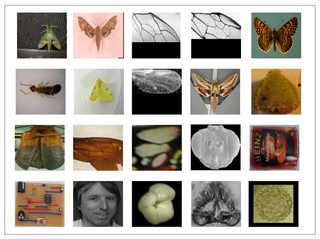
Computational biology refers to the use of data analysis, mathematical modeling and computational simulations to understand biological systems and relationships. An intersection of computer science, biology, and big data, the field also has foundations in applied mathematics, chemistry, and genetics. It differs from biological computing, a subfield of computer science and engineering which uses bioengineering to build computers.
Computer science is the study of the theoretical foundations of information and computation and their implementation and application in computer systems. One well known subject classification system for computer science is the ACM Computing Classification System devised by the Association for Computing Machinery.

The following outline is provided as an overview of and topical guide to academic disciplines:
In computer science, evolutionary computation is a family of algorithms for global optimization inspired by biological evolution, and the subfield of artificial intelligence and soft computing studying these algorithms. In technical terms, they are a family of population-based trial and error problem solvers with a metaheuristic or stochastic optimization character.

Theoretical computer science (TCS) is a subset of general computer science and mathematics that focuses on mathematical aspects of computer science such as the theory of computation, formal language theory, the lambda calculus and type theory.
A computer scientist is a scholar who specializes in the academic study of computer science.
Bio-inspired computing, short for biologically inspired computing, is a field of study which seeks to solve computer science problems using models of biology. It relates to connectionism, social behavior, and emergence. Within computer science, bio-inspired computing relates to artificial intelligence and machine learning. Bio-inspired computing is a major subset of natural computation.
Modelling biological systems is a significant task of systems biology and mathematical biology. Computational systems biology aims to develop and use efficient algorithms, data structures, visualization and communication tools with the goal of computer modelling of biological systems. It involves the use of computer simulations of biological systems, including cellular subsystems, to both analyze and visualize the complex connections of these cellular processes.
The expression computational intelligence (CI) usually refers to the ability of a computer to learn a specific task from data or experimental observation. Even though it is commonly considered a synonym of soft computing, there is still no commonly accepted definition of computational intelligence.
An artificial brain is software and hardware with cognitive abilities similar to those of the animal or human brain.
Unconventional computing is computing by any of a wide range of new or unusual methods. It is also known as alternative computing.
The philosophy of information (PI) is a branch of philosophy that studies topics relevant to information processing, representational system and consciousness, cognitive science, computer science, information science and information technology.

The Environmental Molecular Sciences Laboratory is a Department of Energy, Office of Science facility at Pacific Northwest National Laboratory in Richland, Washington, United States.
Natural computing, also called natural computation, is a terminology introduced to encompass three classes of methods: 1) those that take inspiration from nature for the development of novel problem-solving techniques; 2) those that are based on the use of computers to synthesize natural phenomena; and 3) those that employ natural materials to compute. The main fields of research that compose these three branches are artificial neural networks, evolutionary algorithms, swarm intelligence, artificial immune systems, fractal geometry, artificial life, DNA computing, and quantum computing, among others.

Digital automated identification system (DAISY) is an automated species identification system optimised for the rapid screening of invertebrates by non-experts.

PUPS/P3 is an implementation of an organic computing environment for Linux which provides support for the implementation of low level persistent software agents.

Rana motion vision system is a motion detection that uses vision to detect the presence of objects within its visual field. Rana is based on the open source motion package for Linux, but has significantly enhanced motion detection capabilities. It has been designed top operate as an efficient camera trap system for recording the movements of small invertebrates, capable of operating autonomously in the field for extended periods. To date, Rana has been used a number of projects looking eusocial hymenoptera including studies of bumblebee and hornet activity in the vicinity of their nests and of the behaviour of hover flies and other pollinators at flowers and as a general purpose e-ecology tool for the automated remote observation of plant-pollinator interactions in the field.
Stephanie Forrest is an American computer scientist and director of the Biodesign Center for Biocomputing, Security and Society at the Biodesign Institute at Arizona State University. She was previously Distinguished Professor of Computer Science at the University of New Mexico in Albuquerque. She is best known for her work in adaptive systems, including genetic algorithms, computational immunology, biological modeling, automated software repair, and computer security.

Peter William McOwan was a Professor of Computer Science in the School of Electronic Engineering and Computer Science at Queen Mary, University of London. His research interests were in visual perception, mathematical models for visual processing, in particular motion, cognitive science and biologically inspired hardware and software and science outreach.







